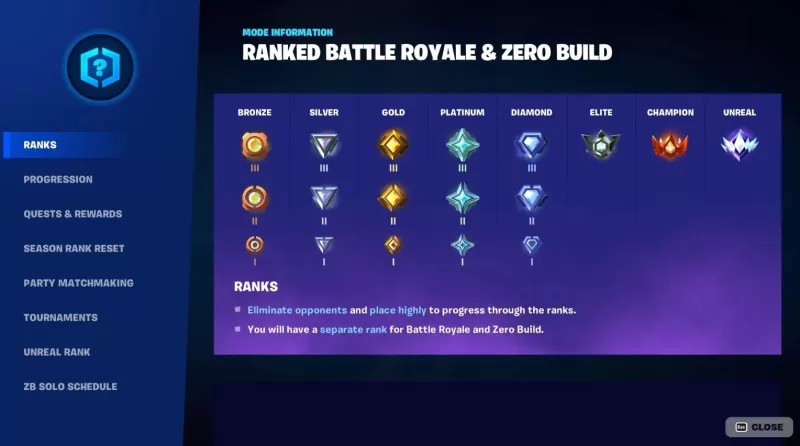
Fortnite Mobile now offers ranked competitive play matching you with similarly-skilled opponents, creating a fair environment to test your abilities. Whether you're starting your competitive journey or perfecting advanced tactics, understanding the ranking mechanics is crucial for climbing the leaderboard. Let's dive in!
Understanding Fortnite's Tiered Ranking Structure
The ranking system features multiple divisions with incremental progression:
- Bronze: I, II, III
- Silver: I, II, III
- Gold: I, II, III
- Platinum: I, II, III
- Diamond: I, II, III
- Elite
- Champion
- Unreal
From Bronze through Diamond, each rank has three sub-divisions. The elite Champion and Unreal tiers represent the highest competitive echelons, with Unreal players featured on global leaderboards.
Rank Advancement System
Your initial placement comes after evaluation matches that assess your skill level. Subsequent progress depends on:
- Eliminations (especially against higher-ranked players)
- Match placement
- Damage output
- Resource gathering
- Objective completion
The system tracks performance separately for Battle Royale and Zero Build modes, maintaining distinct rankings for each.
Proven Ranking Strategies
To efficiently climb the competitive ladder:
- Perfect fundamental skills: building, aiming, and movement mechanics
- Study the map thoroughly for optimal rotations and loot routes
- Engage strategically - prioritize survival over unnecessary fights
- In team modes, maintain clear communication and coordination
- Regularly analyze your gameplay replays to identify improvement areas
Competitive Rewards
Rank progression brings exclusive cosmetic rewards and the prestigious "Burn Bright" mode. Achieving Unreal rank grants global recognition on official leaderboards - the ultimate showcase of your competitive prowess.
For the optimal experience, play Fortnite Mobile on PC using BlueStacks for superior performance without mobile limitations.









